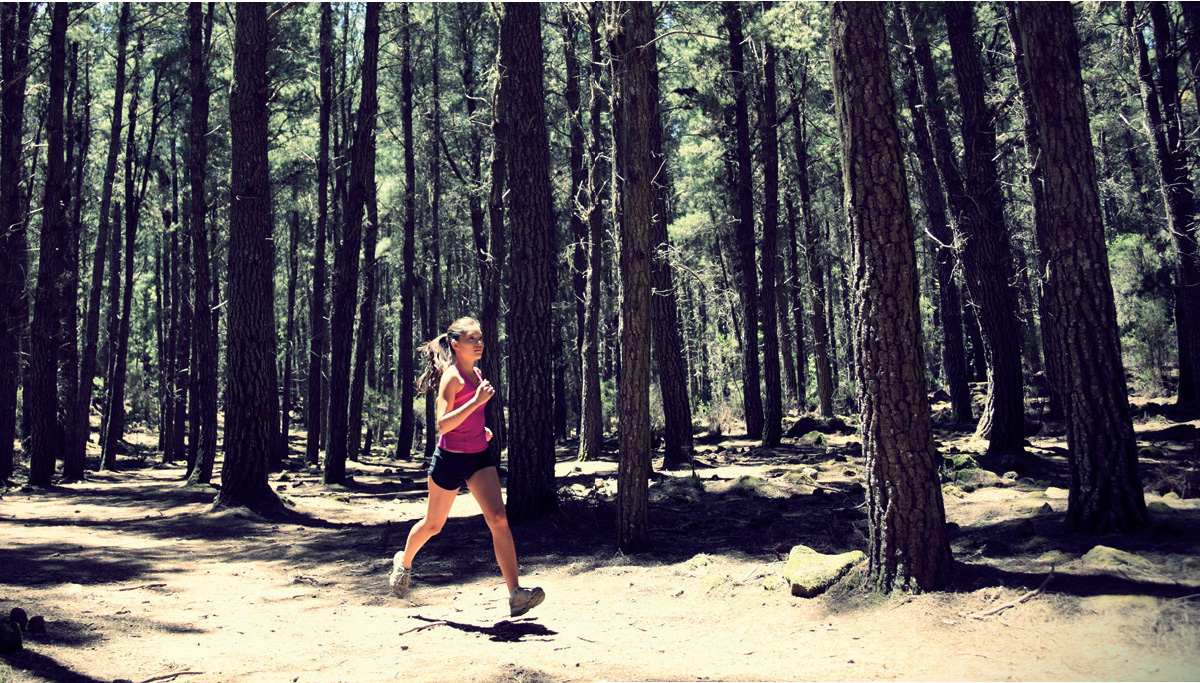
Walk breaks are even more important on long trail runs than on long pavement runs. Not only will the walks allow you to cope with trail hazards, at the end of a trail run your legs are going to be tired and less able to respond to uneven challenges. I hear from quite a few runners every year who tell me that they could have avoided falls, ankle injuries, and tree impact injuries if they had taken walk breaks more frequently.
Using a Run-Walk-Run timer on smooth sections can help you settle into a rhythm. Our Blue Mountain Beach, Florida retreat has mile after mile of mostly stable surface trails, and we use timers. Many runners who don’t take the walks according to a rhythm in the beginning tend to get more tired by the end of the run. Even if you don’t feel like you need to take a walk break during the first mile or two, your legs will thank you later if you do so.
On most trails, the walk breaks will be taken as needed, as noted next. Because you are facing unknown footing ahead on most trails, it’s best to walk at the first sign of a hazard. On rugged trails, watch for rough terrain, slippery surfaces, unknown surfaces, and frequent holes. By walking before you get into risky footing you not only reduce your rate of injury—you allow the muscles to recover before severe fatigue sneaks up on you. In the process, you gain control over your run.
Running form can help you stay under control and stable. Shorten your stride down to baby steps if needed. Keep your feet underneath you at all times. As long as you clear the obstacles on the ground, don’t bounce off the ground. A light touch of the foot, using these form suggestions can allow you to slow down, stop, or make side-to-side movements more easily when needed.
Walk through uneven surfaces. Be prepared at any time to slow down and walk. Keep looking ahead, sizing up the potential surface issues. Always err on the side of walking or even stopping to ensure you have stable ground. When leaves and other debris cover the trail, walk carefully until you feel the path is secure.
Slippery when wet! Moisture can make dirt, rocks, and rock faces very slick. Walk carefully through areas that could be risky. When a stream covers the trail, walk around to find a narrow place to cross. If you have to cross the stream, it’s usually better to walk through it because you don’t know if the ground underneath the water.
Walk up steep hills. It is not only more difficult to run up a hill, you can’t see the surface ahead as well as when running on the flat. It only takes one patch of loose gravel to send you crashing down the hill. When in doubt, be extra careful.
Beware when tired: Take extra time to stay under control. At the end of a long run, you will not be able to control feet and legs as you can when fresh. When rocks, slippery surface, and holes are present, you’re more likely to get injured if you try to run through the hazards.
Primary concept of walk breaks is the same on trails as on pavement: If you take them early and more frequently, you will have better muscle control, more energy, and quicker reflex action later. Even if you have run a trail a hundred times, weather and nature can present you with challenges you did not anticipate. You want to have as many resources as possible when challenged.